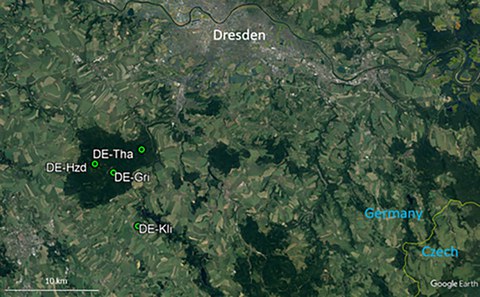Jun 04, 2025
ICOS: New publication revealing controlling factors for carbon fluxes

ICOS monitoring sites about 20 km southwest of Dresden
Scientists from the Institute of Hydrology and Meteorology have published a research article on their long-term measurements of carbon fluxes at different ecosystem monitoring sites in the journal Agricultural and Forest Meteorology. The presented cluster approach made it possible to disentangle the effects of climate extremes and management on carbon fluxes.
The researchers found that CO2 fluxes are more sensitive to disturbance and drought than evapotranspiration. An old-growth spruce forest managed by regular thinnings can be a strong and persistent carbon sink; in contrast, an oak plantation after windthrow remains a net carbon source to the atmosphere for 11 years. If harvest effects are included, permanent grassland is CO2 neutral and cropland is a small but persistent CO2 source depending on crop type.
Grünwald, T., Wanner, L., Eichelmann, U., Hehn, M., Moderow, U., Prasse, H., Queck, R., Bernhofer, C.,Mauder, M. (2025) Carbon fluxes controlled by land management and disturbances at a cluster of long-term ecosystem monitoring sites in Central Europe. Agricultural and Forest Meteorology 369, 110533.
The article is available via this link.
